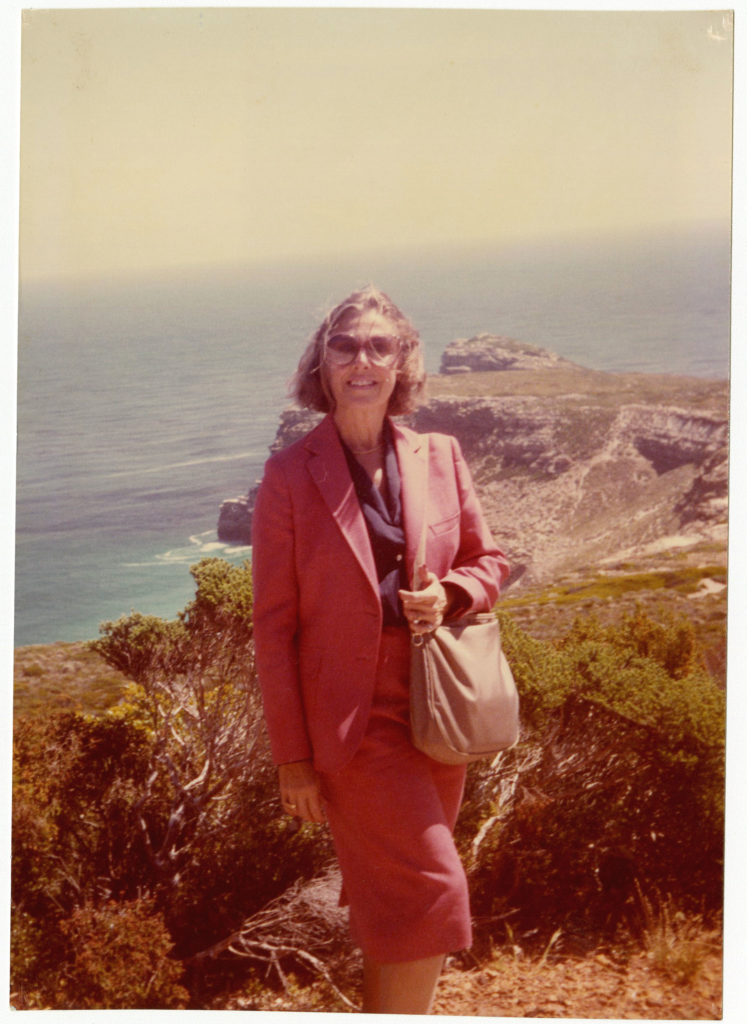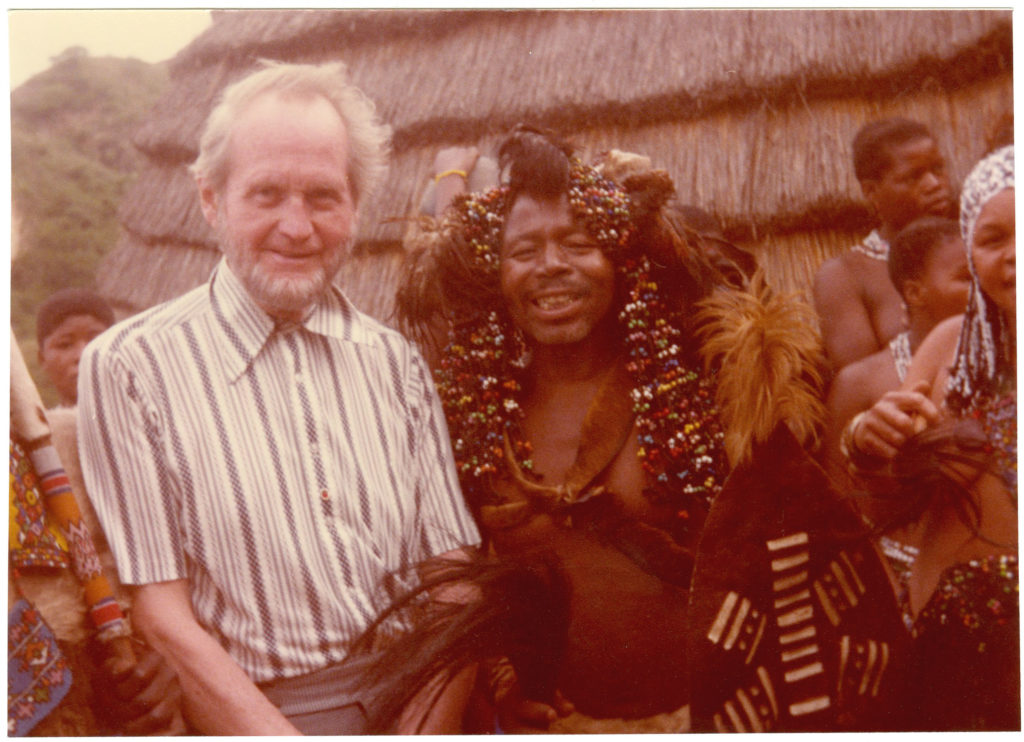In this journal, Sybil tackles the South African government policy of apartheid. Meaning “apartness”, the Nationalist Government of South Africa adopted this segregated system to favor whites in 1948. In her journal, Sybil explains the history behind this policy, dating back to Dutch colonizers. She also discusses how the African National Congress, a group created to defend Africans against repressive white laws, was banned in 1960 following conspiracy to commit sabotage. The ANC’s leader, Nelson Mandela, at the time this journal was written, was in prison for these charges.
Before leaving for South Africa, Sybil includes that a woman once told her that if “you leave South Africa in a state of utter confusion, then you may consider your visit a full success”. With that in mind she writes, “Fortified with bits and pieces of background information and imbued with sensitivity and feeling for a country prodigiously blessed yet in turmoil, we determined to see South Africa, to leave it with deep appreciation and understanding, and to consider our visit a “full success”. From the background information on South African policies to this preconceived conception of South Africa we can gather that Sybil believes South Africa is a beautiful and “blessed” country full of culture yet stuck in turmoil due to the racist laws set into place. Sybil’s thinking directly goes against that of the traditional colonizer as she instead supports the culture that is different from her own. She also reaches farther, bringing to light in the first few pages of her journal an injustice that is plaguing millions but also an injustice started by colonizers.
At the start of her journey, Sybil is very aware of race as she moves through the airport. She points out that her flight to South Africa is filled to “Caucasian capacity”. After arriving in Johannesburg, she states that color division is obvious, “Mechanics, porters, and tax-drivers outside are black; officials at customs and passport control desks inside are white.”
Sybil makes a clear effort to mix into the local scene in South Africa. Although she does partake in more stereotypical tourist activities such as food, bars, shopping, and entertainment, Sybil attempts to do these activities in areas where she would experience the most integration. After her first night, Sybil writes that there are very few black people on the streets of the city at night. Due to the apartheid system, all black people were forced to live outside the city in a community of their own off limits to white people without special authority. This community is called Soweto and is 45 minutes away by train from the city. With no explanation in how she gained this authority, Sybil’s next destination was Soweto, “A visit to Soweto may be described as interesting but depressing. The haunting thought constantly reverberates that, after all, Soweto is a must and not an option for a black person.” When passing his house, Sybil comments, “it was a moment of reflection to see the empty, quiet house of Nelson Mandela, who was silenced for expressing sentiments of the black population too articulately.”
After a visit to a gold mine and a national park, Sybil and Cliff make their way to the Cape of Good Hope, the most southern tip of the continent of Africa. Sybil spares no detail in explaining the fun and popular destinations in and around the Cape.
Sybil’s next stop is to visit a Zulu tribe where she includes stories told about the culture of the Zulu people. It is likely Sybil was already familiar with the Zulu people as there is an active community of Zulu people also in New Orleans. Her depiction of the tribe’s witch doctor is especially interesting as she describes the doctor’s dress entirely, including skins, beads to protect against evil, and pieces of animal parts. After posing for a picture, Cliff, a pediatrician, swapped prescriptions with the witch doctor.
In closing, Sybil quotes Helen Suzman, a parliament member and leading anti-apartheid speaker in that two things should be non-negotiable for South Africa: “no race discrimination and no oppression by one group on the other.” This is a tall order since even America hasn’t yet mastered an oppression-free society. Her last words on South Africa came from watching the spinning of a roulette wheel with a sense of agitation. “The wheel, invariably, stopped at black or white.”


